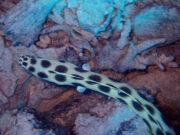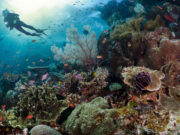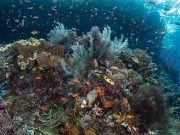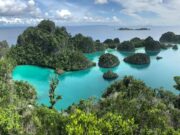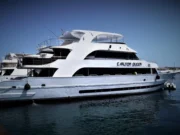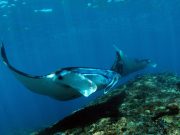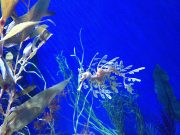Marine Stewardship Council awards the Maldives‘ pole-and-line skipjack tuna fishery its sustainability certification. This follows independent assessment against the MSC’s environmental standard. The tuna (Katsuwonus pelamis) from members of the Maldives Seafood Processors and Exporters Association (MSPEA), can now be marketed with the MSC’s globally recognised ecolabel. This blue label provides people with assurance that the fish is traceable back to a certified sustainable source.
Regional management of tuna in the Indian Ocean falls under the Indian Ocean Tuna Commission (IOTC). Maldives has been an active participant in the IOTC’s scientific working parties and became a full member in July 2011.
Pole-and-line fishing is a centuries-old practice in the Maldives and the fishery is often heralded as a good example of highly selective and low impact fishing. Since entering MSC assessment in July 2009 the Maldives has proposed and advocated for resolutions on the Precautionary Approach (PA) and the establishment of reference points for tuna stocks.
In addition the Maldives introduced a shark fishing and export ban, which came into effect in July 2010, and announced at Rio +20 that the entire country would become a biosphere reserve within the next five years, allowing only sustainable fishing practices. “Maldivians take pride in their skipjack pole-and-line fishery – a sustainable fishery that has thrived for over a millennium by catching tuna one by one. Maldivians are grateful and delighted that at last the world has recognised, through open and transparent scrutiny, the sustainable nature of our fishery– a fact that we have always believed. We thank all stakeholders, the MSC and our certifier for their support”, said Minister of State for Fisheries and Agriculture, Dr Hussain Rasheed Hassan.
Historically, Maldives’ economy was entirely dependent on fisheries and other marine products and fishing is still the second most important economic sector today, after tourism. Fishing and related activities employ around 30 per cent of the country’s workforce, contributing over 15 per cent of Gross Domestic Product (GDP) and, in recent years, Maldives’ skipjack catches have made up approximately 90,000 tonnes of their pole-and-line fishery. Products are canned or put into pouches for export, mainly to Europe where many retail and food service sector companies have made strong commitments to source certified sustainable and fully traceable seafood choices. With growing demand and increasing consumer recognition of the MSC label in these strategically important markets it is anticipated that this fishery will benefit significantly from its newfound status.
Further Reading:
Marine Stewardship Council

